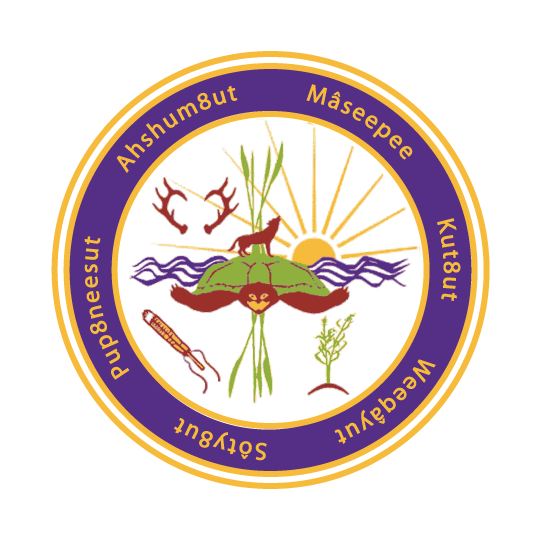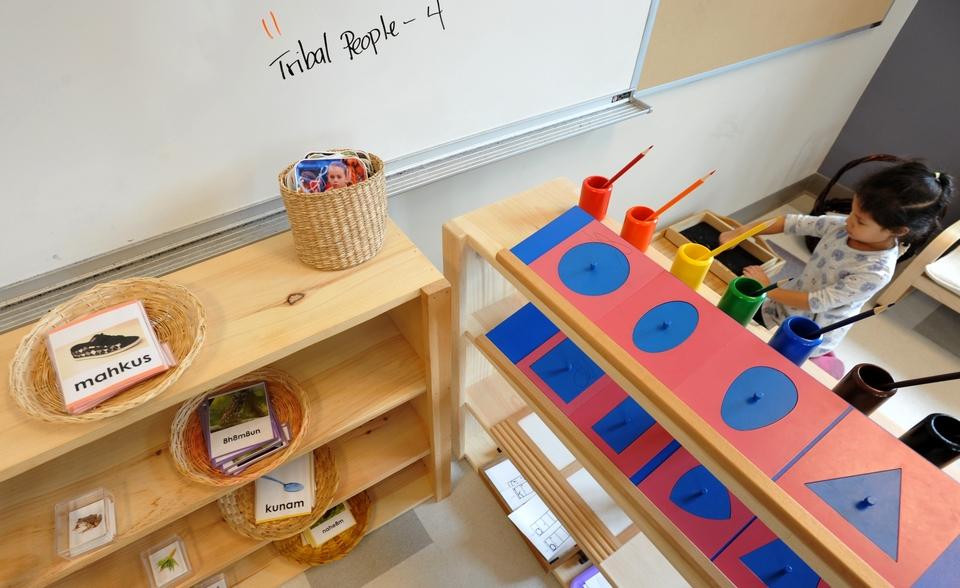
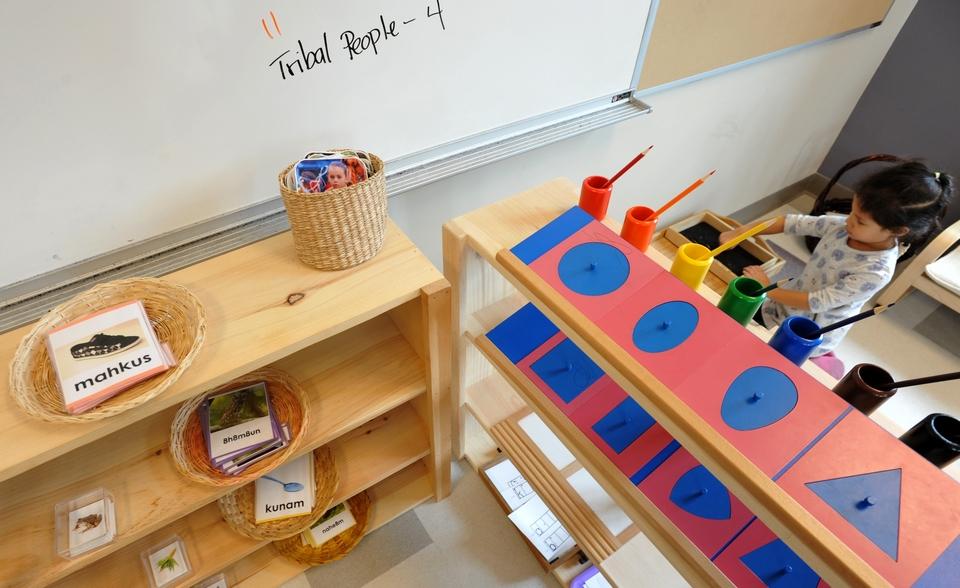
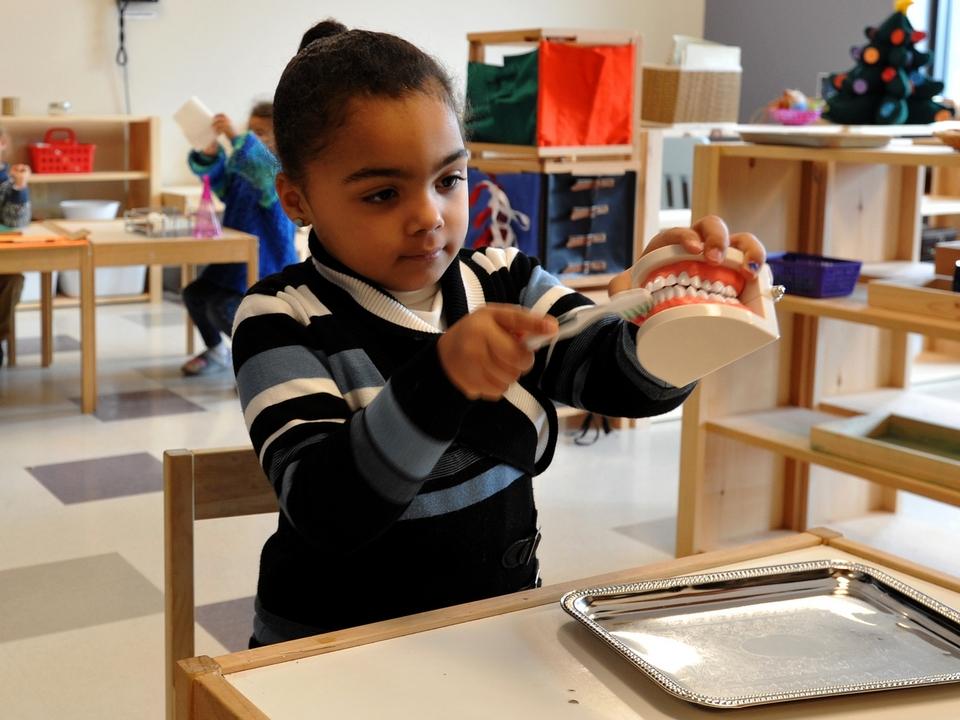
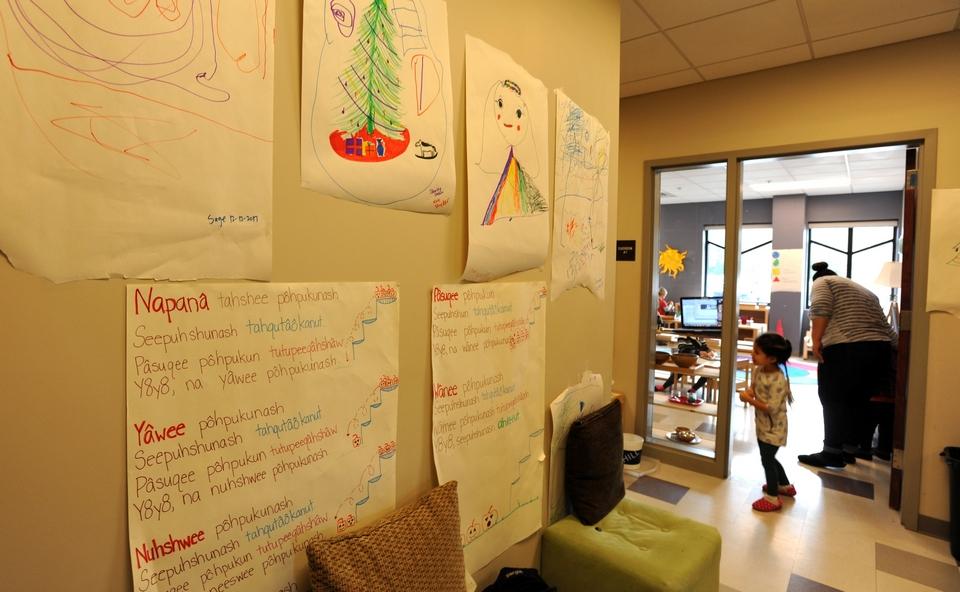
MASHPEE — Students of the Mukayuhsak Weekuw language nest, or the ″Children’s House,” could be the first to grow up with a proficiency in Wôpanâak, the long-lost language of the Wampanoag nation.
And if the toddlers — some as young as 3 years old — decide to attend high school in Mashpee, they may be able to take classes about their native tongue for credit.
“The vast majority of their school day is spent hearing Wampanoag language,” said Mashpee Wampanoag Language Department Director Jennifer Weston of the 18 preschoolers and kindergartners enrolled in the immersion school this year. “Mukayuhsak Weekuw is a very special place. The environment has been carefully designed to meet the developmental needs of children. A very delicate balance occurs between the child, teacher and the environment as they work together to support growth and learning.”
The immersion school serves children with familial ties to the Mashpee Wampanoag Tribe between the ages of 2 to 6. The two-year-old program is part of a broader tribal project to reclaim the language, which had gone some six generations without a native speaker.
There is some English speaking in the classroom, given that students are predominantly residents of Mashpee households. But while in the language nest, children are taught to communicate in Wôpanâak through hands-on instruction, teacher-guided discussions and memorization of Wampanoag prayers and songs.
The classroom environment follows the Montessori methodology, which focuses on group and social learning within a controlled environment.
The project to rebuild the lost tongue began with Wampanoag Tribal Council Vice Chairwoman Jessie “Little Doe” Baird in the early 1990s, and the effort involved the Mashpee, Aquinnah, Assonet and Herring Pond Wampanoag communities. Baird said the last speaker of the language is thought to have died 170 years ago.
Now Wôpanâak is being taught to Wampanoag youth for 180 days a year by a special team of four full-time instructors, who also participate in immersion-style learning in order to teach the ancient language. Last year teachers provided more than 900 hours of Wampanoag language instruction.
MASHPEE — Students of the Mukayuhsak Weekuw language nest, or the ″Children’s House,” could be the first to grow up with a proficiency in Wôpanâak, the long-lost language of the Wampanoag nation.
And if the toddlers — some as young as 3 years old — decide to attend high school in Mashpee, they may be able to take classes about their native tongue for credit.
“The vast majority of their school day is spent hearing Wampanoag language,” said Mashpee Wampanoag Language Department Director Jennifer Weston of the 18 preschoolers and kindergartners enrolled in the immersion school this year. “Mukayuhsak Weekuw is a very special place. The environment has been carefully designed to meet the developmental needs of children. A very delicate balance occurs between the child, teacher and the environment as they work together to support growth and learning.”
The immersion school serves children with familial ties to the Mashpee Wampanoag Tribe between the ages of 2 to 6. The two-year-old program is part of a broader tribal project to reclaim the language, which had gone some six generations without a native speaker.
There is some English speaking in the classroom, given that students are predominantly residents of Mashpee households. But while in the language nest, children are taught to communicate in Wôpanâak through hands-on instruction, teacher-guided discussions and memorization of Wampanoag prayers and songs.
The classroom environment follows the Montessori methodology, which focuses on group and social learning within a controlled environment.
The project to rebuild the lost tongue began with Wampanoag Tribal Council Vice Chairwoman Jessie “Little Doe” Baird in the early 1990s, and the effort involved the Mashpee, Aquinnah, Assonet and Herring Pond Wampanoag communities. Baird said the last speaker of the language is thought to have died 170 years ago.
Now Wôpanâak is being taught to Wampanoag youth for 180 days a year by a special team of four full-time instructors, who also participate in immersion-style learning in order to teach the ancient language. Last year teachers provided more than 900 hours of Wampanoag language instruction.
